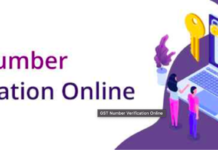Now is the high time for small & medium businesses to be ready for the e-Invoicing system.
With the aggregate turnover coming down to 50 Cr. the number of taxpayers under the e-Invoicing system has increased drastically. The government intends to bring this aggregate turnover bar much lower so that it could engage more & more businesses under e-Invoicing.
Businesses need not be afraid of the e-Invoicing structure, on the contrary, the businesses should look forward to this step as an effective measure to bring transparency to the taxation structure.
In this article, we shall discuss some of the checklist points to be prepared for the GSTR-1 filing after you have generated your e-Invoices.
Changes in the post the e-Invoicing under GST world
e-Invoicing under GST has changed the invoice generation process.
It would be more correct if we say that, the e-Invoicing system has ‘streamlined the invoice generation by adding a government authentication factor to it.

I’ll explain the major changes that have happened post e-Invoicing under GST in the table given below:
| Activity | Before e-Invoicing | After e-Invoicing |
| Invoice generation | Generated in the billing system | • Generate invoice in your billing system. • Upload to the IRP • Generate IRN number with QR code. |
| E-Way Bill | • Prepared on e-Way Bill portal • Can be generated by Supplier, Recipient or transporter | • Can be done on the IRP system itself for all the B2B invoices • E-Way Bill portal is still used to generate e-way bills for invoices without IRNs, delivery challans, B2C invoices etc. |
| GSTR-1 | • Filed by the supplier • All the data uploaded by the Supplier | • E-Invoice details get auto-populated in the GSTR-1. • E-Invoices with IRN generated can be amended while filing GSTR-1. |
Fields Impacted in GSTR-1 after e-Invoicing under GST
1. Auto-population from e-Invoice data
e-Invoicing under GST has one of the benefits that the fields in the e-Invoice generated will get auto-populated in the GSTR-1 of the taxpayer.
There are 4 sections, in the taxpayer’s GSTR-1 which will get auto-populated from your e-Invoice.
- B2B
- CDNR
- EXP
- CDNUR (related to export invoices)
| Type of Supply | Auto-populated in GSTR-1 |
| Taxable supplies made to a registered person (other than registered under reverse charge mechanism) | B2B 4A – Supplies other than those (i) attracting reverse charge and (ii) supplies made through e-commerce operator |
| Taxable supplies made to registered persons attracting reverse charge | B2B 4B – Supplies attracting tax on reverse charge basis |
| Export supplies | EXP 6A – Exports |
| Credit or debit notes issued to registered persons | CDNR 9B – Credit Note or debit note issued to any registered person |
| Credit Note or debit note issued to any unregistered persons | CDNUR 9B – Credit or debit notes issued to an unregistered person – with UR type as Exports with payment and without payment of tax |
Thus, GSTR-1 will now be easier to file as the major fields will be auto-populated right from your e-Invoice generation data.
However, it is necessary to be careful as any differences found in GSTR-1 & the e-Invoice generation can lead to a tax complication and further probe will be given to the concerned tax officer.
Manually checking every entry can be cumbersome and also introduce a human error in the GSTR-1 draft.
Taking assistance of an GSTR-2A reconciliation tool can help you reduce your efforts and give you a detailed report of all the missing values.
2. Nil / Exempted & Non-GST Supplies
- On the sale of nil, exempted and Non-GST supplies, a ‘Bill of Supply’ is issued.
- It is important to note that, ‘Bill of Supply’ is NOT included under the e-Invoicing system.
- According to the rules of e-Invoicing under GST, separate documents to be issued for taxable supplies and Nil, exempt and non-GST supplies when there is a transaction between two registered parties.
- Tax invoice is mandatory for all the taxable supplies whereas, Bill of Supply is required for all the nil rated, exempt & non-GST supplies of goods or services.
- To make GSTR-1 auto-population more simple keep the following things in mind while e-Invoice generation:
- Generate IRN for regular tax invoices, credit notes & debit notes, only. Do not send ‘Bill of Supply’ for IRN generation as this will further complicate the GSTR-1 auto-population.
- If a transaction involves supplies of taxable as well as nil rated or exempted supplies, there should be two sets of documents supporting this claim.
- It is important to note that, all the invoices sent to the IRP portal by the taxpayer will be used by the GSTN to auto-populate your GSTR-1.
3. B2C Transactions
- B2C transactions are NOT eligible for an e-Invoice generation.
- Hence, these B2C invoices have to be uploaded in the GSTR-1 by the taxpayer as these will NOT get auto-populated.
B2C invoices can be classified into two types as shown in the table:
| B2C Large | B2C Others |
| Interstate B2C transactions with an invoice value of greater than equal to 2.5 lac. | Interstate B2C transactions with an invoice value of less than 2.5 lac. |
| Credit Notes relating to these transactions have to be reported under the CDNUR section in the GSTR-1 | For these transactions, the data is to be reported at an aggregate level in GSTR-1. |
The reporting of B2C transactions remains unchanged in GSTR-1 post-e-Invoicing under GST.
NOTE: One compliance requirement is added for the companies with an annual aggregate turnover above 500 Cr.
This makes self-generated & dynamic QR code generation, mandatory for all B2C transactions.
This step is taken towards encouraging digital payments in the country.
Note 2: Businesses can use eInvoice software to differentiate between B2B and B2C transaction when you are generating e-Invoices in bulk.
4. Advances- Tax Paid
- These should be uploaded by the taxpayer in his GSTR-1.
- GST applies on the advances received from the customer & also on the subsequent invoice issued on those invoices.
- Taxpayers tend to adjust the invoices issued against advances with the tax they have already paid.
- In the GSTR-1, there are 2 different columns to report these transactions.
- Advances Received
- Advances Received Adjusted
- Transactions for these advances received & adjusted are reported at an aggregate level i.e. Taxable values and tax values aggregated at Place of Supply (PoS) and tax rate level.
According to the previous method of GSTR-1 reporting, this flow remains unchanged for reporting the invoices against the advances from the customers.
In a Nutshell
GSTR-1 filing has become easier post-e-Invoice introduction.
GSTR-1 is an important document as the Input Tax Credit of the recipient is dependent on a Supplier’s GSTR-1.
However, the supplier must file his GSTR-1 on time and also more accurately.
While furnishing your transactions for IRN generation you should take utmost care that you provide accurate data without leaving any gaps between the e-Invoice data and the auto-populated fields in the GSTR-1.
Tax experts suggest using an eInvoice Solution for matching the entries and making the reconciliation a true success by removing all the gaps.













































